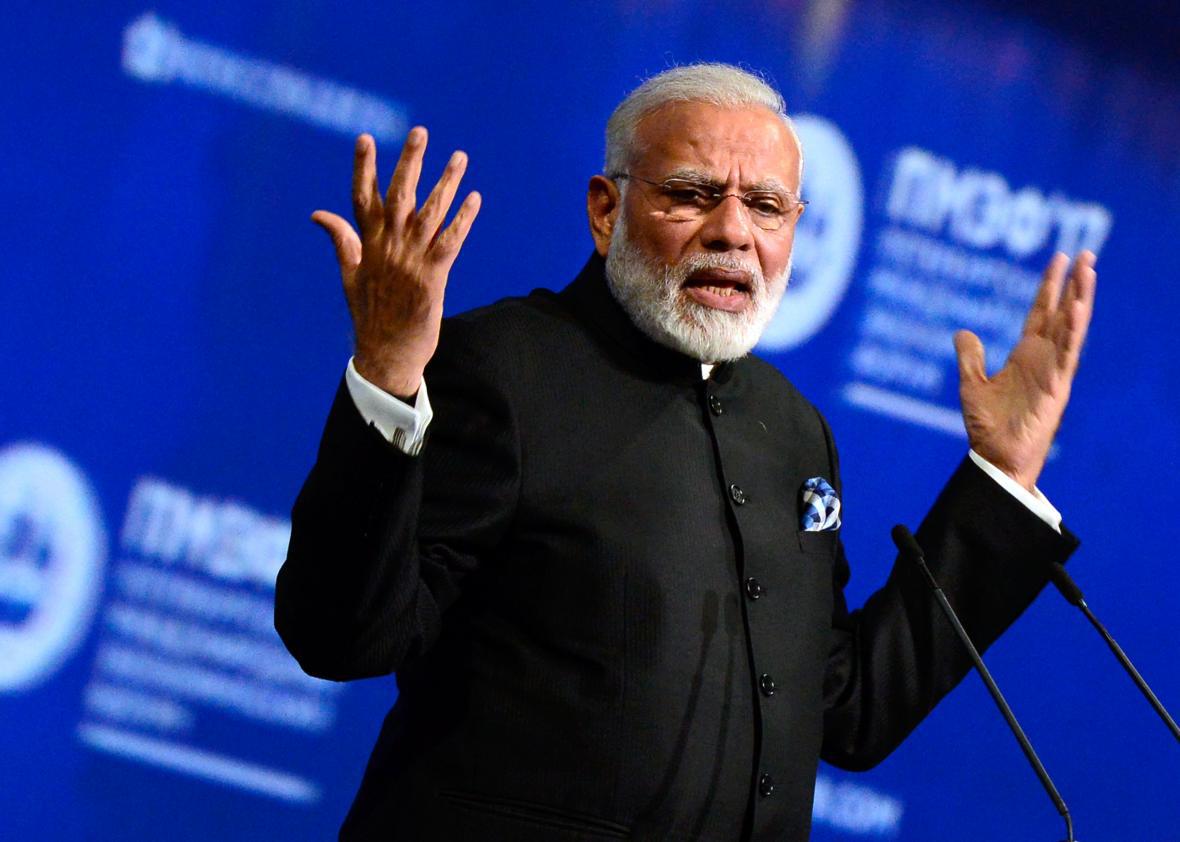Indian Prime Minister Narendra Modi will meet President Trump at the White House on June 26, the White House and Indian Foreign Ministry announced Monday, the first meeting of the two leaders in Trump’s presidency.
The meeting comes after Trump withdrew the U.S. from the Paris Climate Agreement on June 1 and accused India of receiving “billions and billions and billions of dollars in foreign aid from other nations” through the agreement.
Trump’s statement was swiftly rebuked by Indian Foreign Affairs Minister Sushma Swaraj: “India didn’t sign the Paris climate deal under pressure or greed for money. We signed it because of our belief—a 5,000-year-old belief in environment. If someone says we signed it for money or under pressure, I’ll reject it. It is wrong.”
The Indian PM is also expected to challenge the Trump’s administration’s decision to reduce H-1B work visas. Trump signed an executive order in April bringing changes to the H-1B policy frequently used by American companies to recruit foreigners for high-skilled jobs. The changes would make it harder and more expensive for Indian professionals to apply for H1-B visas and work in the country, according to Indian tech firms.
“I would like to assure the country that we are in touch with the members of the U.S. Congress and the administration on this matter,” Swaraj said last week while talking to Indian media. “When the Prime Minister travels there, this is one of the issues that he is planning to raise.”
The two leaders also will possibly be at odds with their respective “America First” and “Make in India” campaigns. Trump has continued since his inauguration to reiterate his call for American companies to keep their investments in the U.S. Meanwhile, Modi has pressed on multinational companies to manufacture their products in India. The theme of economic nationalism was a driving force for both their successes at the polls.
Trump in recent months has taken a more positive approach to China, India’s rival in the region. In an interview with the Wall Street Journal, Trump backed off from calling the country a currency manipulator. This was a shift from his earlier campaign promise to reduce cheap Chinese exports to the United States. Devaluation of the Chinese yuan over the years has caused problems for India’s trade and banking sector.
In spite of these differences, both the U.S. and India enjoy a strong relationship. The two countries signed a defense framework agreement in 2005, and India is touted as a “major defense partner” by U.S. officials.
Trump’s financial ties to India make it an important partner for him personally. A spokesperson for a Mumbai-based real estate developer talked last year of his business in India to CNBC:
“India probably has the highest number of Trump-branded real estate projects outside of North America,” said a spokesperson for Tribeca, a Mumbai-based developer that acts as Trump’s partner in India. “Trump has five ongoing deals in India with a gross development value of about $1.5 billion” with “more projects likely to be launched in 2017.”
Trump and Modi spoke to each other by phone after the president’s inauguration ceremony, and during the conversation, Trump described India as “a true friend and partner in addressing challenges around the world.”
The administration’s announcement of the meeting was slightly marred by embarrassing imprecision. Press Secretary Sean Spicer referred to “India’s 1.6 billion citizens” in his Monday briefing, a number inflated by more than 300 million. (A written White House statement seemed to refer to the combined U.S. and India populations as constituting a “partnership” of 1.6 billion citizens.)
